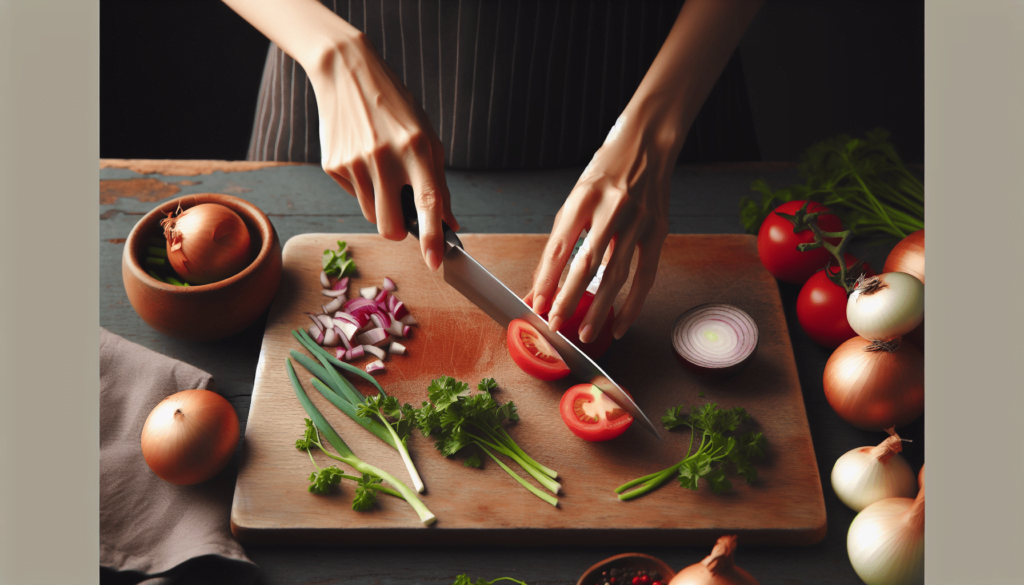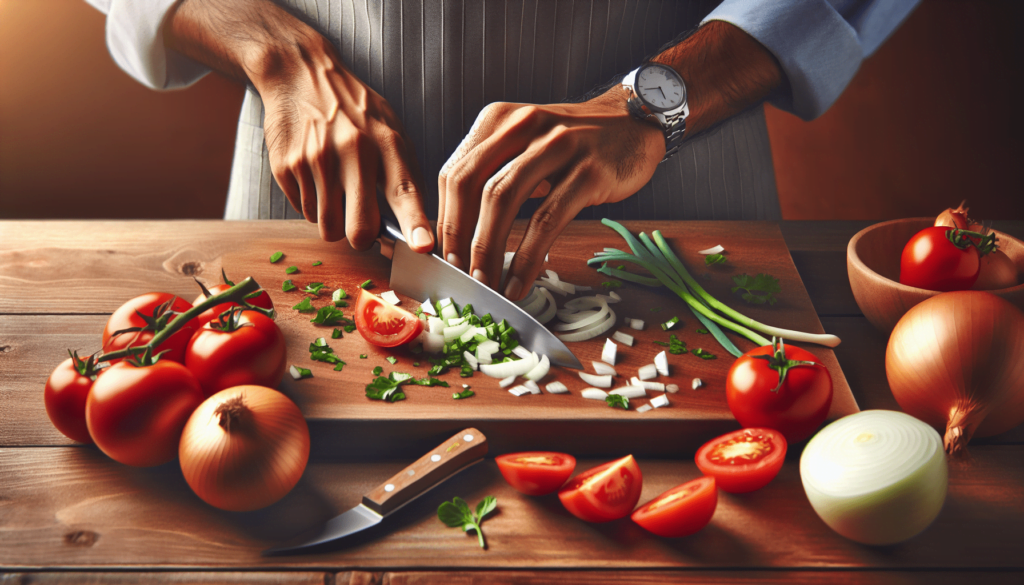How to Start Cooking with No Experience
Have you ever found yourself gazing longingly at a recipe book, imagining the possibility of creating a scrumptious meal but feeling entirely overwhelmed by the mere thought? Don’t worry; you’re certainly not alone. Many people find the idea of cooking daunting, particularly if they’ve never ventured into the kitchen beyond reheating leftovers or making a simple sandwich. But starting from scratch doesn’t have to be intimidating. This guide will walk you through the basics, turning the process into an enjoyable journey from beginner to confident home cook.
Table of Contents
Why Start Cooking?
Before we dive into the how-to’s, let’s explore why you might want to start cooking. Home-cooked meals are generally healthier, more affordable, and often more satisfying than takeout or pre-packaged food. Cooking also gives you control over the ingredients you use, providing the freedom to cater to any dietary restrictions or preferences. Plus, it’s an incredibly rewarding skill that you can share with family and friends, forging connections over delicious meals.
The History of Home Cooking
Cooking is as old as humanity itself, dating back to our earliest ancestors who discovered fire and began to experiment with heat to make food safer and more palatable. Over centuries, different cultures have developed unique culinary traditions, techniques, and recipes, all contributing to the rich tapestry of global cuisine we enjoy today. In recent years, the rise of cooking shows, food blogs, and online tutorials has made culinary knowledge more accessible than ever that even absolute beginners can learn the ropes with ease.

Current Trends in Home Cooking
Cooking has experienced a resurgence in popularity, especially with more people spending time at home. From sourdough bread to elaborate multi-course meals, social media platforms are abuzz with culinary creations. The trend towards healthier eating has also spurred interest in cooking, as people become more conscious of what they put into their bodies. Whether it’s plant-based diets, keto-friendly meals, or farm-to-table ingredients, there’s something for everyone.
Budget-Friendly Cooking
One of the most significant advantages of cooking at home is the cost savings. With a little planning, you can make delicious meals without breaking the bank. Create a shopping list based on your weekly meal plan and stick to it to avoid impulse buys. Buy in bulk for staple ingredients and always be on the lookout for sales and discounts. Cooking at home can quickly pay off, not just financially, but also in terms of health and well-being.
How to Get Started
Essential Kitchen Tools
You don’t need a fully outfitted gourmet kitchen to start; just a few essential tools will suffice. Here’s a list of basics to get you going:
| Tool | Purpose |
|---|---|
| Chef’s Knife | Chopping, dicing, slicing |
| Cutting Board | Protects your countertop and allows safe chopping |
| Measuring Cups and Spoons | Accuracy in recipes |
| Mixing Bowls | Mixing ingredients with ease |
| Pots and Pans | Cooking a variety of dishes |
| Baking Sheet | Baking and roasting |
| Spatula and Wooden Spoon | Stirring, flipping, mixing |
Basic Ingredients to Stock
Having a well-stocked pantry can make spontaneous cooking much easier. Consider keeping these staples:
| Ingredient | Use |
|---|---|
| Olive Oil | Cooking, dressing |
| Salt and Pepper | Seasoning |
| Flour | Baking, thickening |
| Sugar | Baking, sweetening |
| Garlic and Onions | Flavor base for many dishes |
| Canned Tomatoes | Sauces, soups |
| Pasta and Rice | Versatile base for many meals |
Understanding Cooking Terms
Cooking comes with its own set of jargon, and understanding these terms can demystify the process:
| Term | Meaning |
|---|---|
| Sauté | Cooking quickly in a small amount of oil |
| Simmer | Cooking just below boiling point |
| Dice | Cutting into small cubes |
| Sear | Cooking at high heat until a crust forms |
| Deglaze | Adding liquid to a pan to dissolve browned bits of food |
Simple Recipes to Begin With
Recipe 1: Classic Scrambled Eggs
- Ingredients: Eggs, salt, butter, and a splash of milk.
- Method: Crack the eggs into a bowl, add a pinch of salt and a splash of milk, and whisk. Heat butter in a pan over medium heat. Pour in the egg mixture and gently stir until fully cooked.
Recipe 2: Pasta with Garlic and Oil (Aglio e Olio)
- Ingredients: Pasta, olive oil, garlic, red pepper flakes, parsley.
- Method: Cook pasta according to package instructions. Meanwhile, heat olive oil in a pan, add sliced garlic and red pepper flakes, and cook until garlic is golden. Toss the pasta in the oil mixture and sprinkle with parsley.
Learning from Mistakes
The best cooks have all had their share of kitchen disasters. Don’t let a burnt dish or a failed recipe discourage you. Each mistake is an invaluable lesson, teaching you what to do (or not to do) next time. Keep a cooking journal to track your successes and failures, so you can learn and improve continually.

Expanding Your Skills
Experimenting with Ingredients
Once you’re comfortable with a few basic recipes, start experimenting with different ingredients and flavors. Visit local farmers’ markets to find fresh, seasonal produce, or try incorporating international flavors into your meals. Cooking is as much about creativity as it is about techniques and recipes.
Cooking Methods
Different methods can yield varied textures and flavors even with the same ingredients. Here’s a quick comparison of common cooking methods:
| Cooking Method | Description | Example |
|---|---|---|
| Baking | Cooking with dry heat in an oven | Cakes, bread, casseroles |
| Grilling | Cooking on a grill over an open flame | Steaks, vegetables |
| Steaming | Cooking with steam | Fish, dumplings |
| Roasting | Cooking in an oven with dry heat | Vegetables, chicken |
| Poaching | Cooking in simmering liquid | Eggs, fish |
Knife Skills
Good knife skills are foundational for efficient and safe cooking. Here’s a simple guide to honing your techniques:
- Chopping: Practiced chopping helps with even cooking and aesthetics.
- Slicing: Master consistent slices for recipes requiring uniformity.
- Dicing: Learn to dice vegetables for soups, stews, and salads.
Real-Life Examples
Example 1: Overcoming Kitchen Anxiety
Think of Jane, who never cooked because she believed it was too complicated. Jane began with simple recipes like scrambled eggs and gradually built up to more complex dishes like lasagna. Over time, her confidence grew, bringing a sense of accomplishment and joy every time she nailed a new recipe. Her experience underscores the importance of starting small and building up skills incrementally.
Example 2: Embracing Mistakes
John decided to cook a complex dish for his friends but ended up burning the main ingredient. Instead of being disheartened, he used it as a learning experience. He researched what went wrong, consulted cooking forums, and tried again until he got it right. John’s journey shows that persistence and an open mind can make all the difference.
Comparing Different Approaches
There are countless ways to approach learning how to cook. Let’s look at a few popular methods:
| Approach | Pros | Cons |
|---|---|---|
| Self-Taught through Online Videos and Blogs | Flexible, free resources, a variety of cuisines | Can be overwhelming, lack of hands-on guidance |
| Cooking Classes | Structured learning, expert advice | Can be expensive, scheduling constraints |
| Participating in Community Kitchens | Social interaction, shared knowledge | Limited availability, possible cost |
| Following Recipe Books | Comprehensive, tried-and-tested recipes | Can be intimidating for beginners, no interactive guidance |
Impact Assessment
Each approach has its own merits and drawbacks. Online videos and blogs offer accessibility, while cooking classes provide hands-on experience. Community kitchens foster a sense of community, whereas recipe books can serve as reliable guides. Depending on your learning preferences, combining a few of these methods could offer a balanced and effective cooking education.
Future Directions and Implications
Predictions
As technology continues to evolve, the future of cooking education looks promising. Virtual reality cooking classes may offer immersive, hands-on experiences without leaving your home. AI-powered kitchen gadgets could guide you step-by-step, ensuring precision and reducing the margin for error. The trend toward personalized nutrition will likely grow, with apps advising on tailor-made recipes to fit individual health goals.
Implications
The implications of honing your cooking skills extend beyond the kitchen. Improved cooking can lead to better health outcomes, more meaningful social interactions, and a greater sense of personal achievement. In a society increasingly focused on well-being, cooking can play a crucial role in enhancing overall quality of life. So, what are your thoughts on the potential future of cooking? Eager to try your hand at a new recipe?
Conclusion
We’ve walked through the essentials of how to start cooking, from understanding why cooking is beneficial and the basics you’ll need, to delving into beginner-friendly recipes and tips for expanding your skills. The journey of learning to cook is filled with trial and error, but each step brings you closer to culinary mastery.
In summary, cooking can be an enjoyable and rewarding skill to learn, providing multiple benefits beyond just delicious meals. Whether you’re motivated by health, budget, or the sheer joy of creating something delicious, now is the perfect time to start.
What do you think? Ready to take the leap into the world of cooking with no experience? Remember, every great chef started as a beginner—so can you. Happy cooking!
